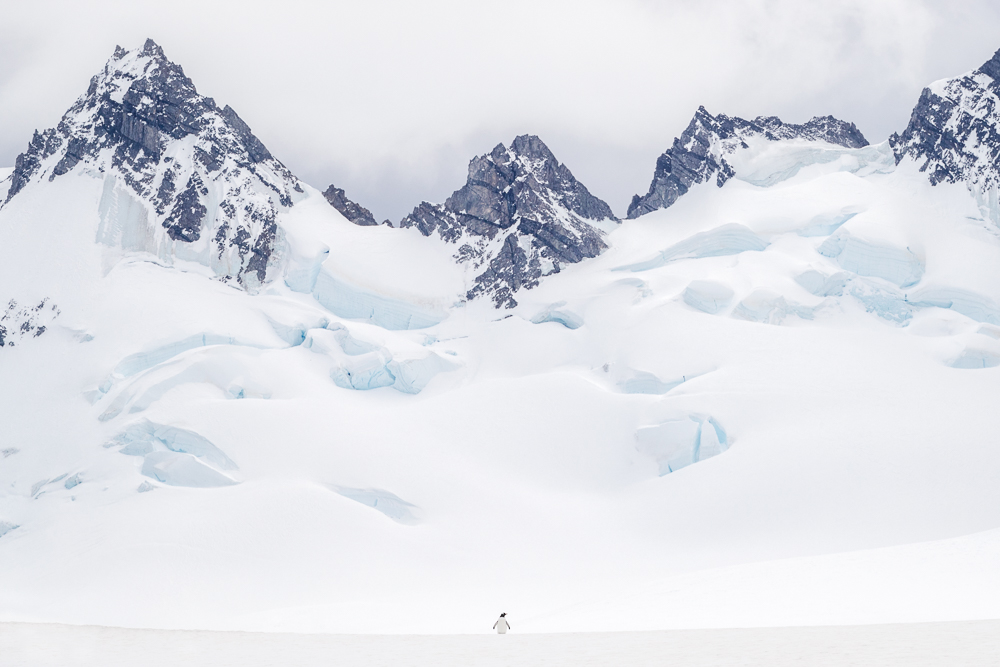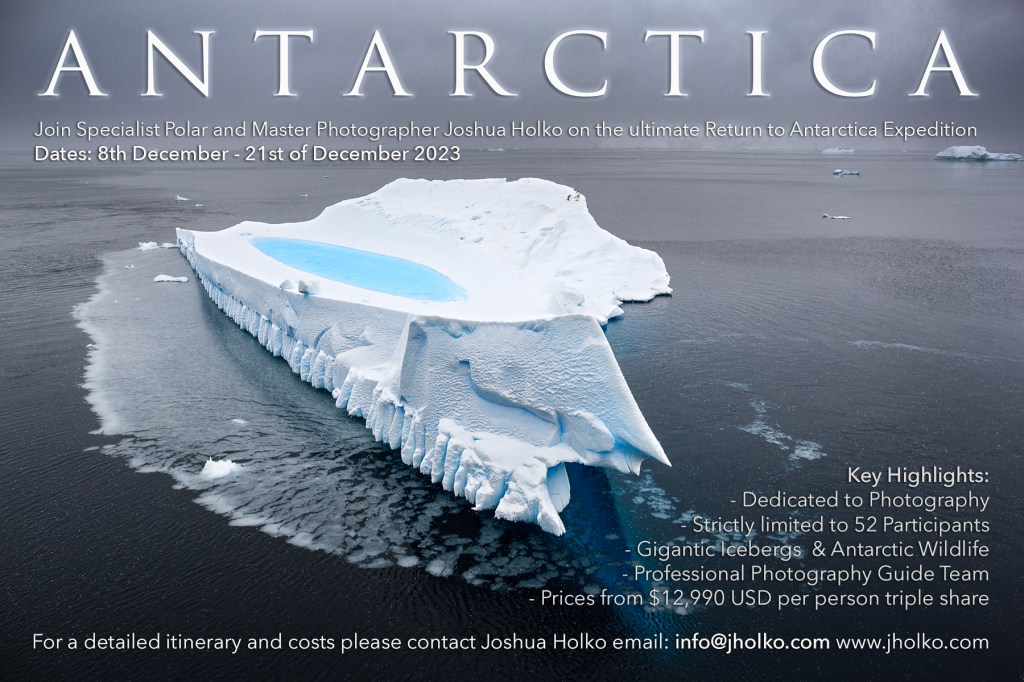Photographing the unparalleled beauty of Antarctica requires some planning and consideration of photographic equipment. As someone privileged to explore and document the frozen wonders of this pristine continent, I understand the importance of choosing the right lenses to capture its grandeur (and ensure ease of travel). In this post, I’ll guide you through the lens selection process, helping you choose the best optics to bring Antarctica’s breathtaking landscapes to life and emphasising the significance and importance of zoom lenses for their flexibility in Antarctica’s dynamic environment.
Two camera bodies are highly recommended for any Antarctic expedition, both for redundancy and the added versatility of quickly changing focal lengths without changing lenses too often in the field. Antarctica is an incredibly dusty environment, and minimising the opportunity for dust on the sensor is always a good idea.
Wide-Angle Lens (16-35mm or 14-35mm)
Antarctica is a land of vast, expansive landscapes that demand to be captured in all their glory. A wide-angle lens, such as a 16-35mm or 14-35mm, is indispensable for showcasing the sweeping panoramas of icebergs, glaciers, and icy shorelines. It excels in creating a sense of scale, emphasising the endless horizons, and allowing you to incorporate the mesmerising skies and otherworldly light that Antarctica offers. A wide-angle zoom will also enable you to better frame and compose your image than a fixed focal length lens – especially when shooting from Zodiac.

Mid-Rang Zoom Lens (24-105mm)
In the dynamic environment of Antarctica, flexibility is key. A zoom lens in the range of 24-105mm provides versatility to capture both expansive landscapes and wildlife encounters without the need to change lenses. This flexibility ensures that you’re ready to capture any moment, whether you’re framing a distant iceberg or a close-up of a penguin colony. This lens is a workhorse that adapts to the ever-changing scenes and compositions Antarctica offers. Many mid-range zoom lenses also offer macro capability and can be an intelligent choice to minimise the number of lenses you may pack for an Antarctic expedition.

Telephoto Zoom Lens (70-200mm)
A telephoto zoom lens is a versatile tool that lets you bring distant subjects closer, making it perfect for capturing wildlife and minor landscape details. In Antarctica, you can photograph magnificent creatures such as penguins, seals, and whales. A 70-200mm lens strikes a balance between reach and flexibility, enabling you to capture close-ups of wildlife while maintaining the stunning environment as the backdrop. It also lets you focus on more intimate landscape details if the light is too harsh for grand vistas.

Super-Telephoto Lens (200-500mm)
To truly immerse yourself in Antarctica’s wildlife, consider a super-telephoto lens in the 200-500mm range. This lens offers remarkable reach, allowing you to capture the intricate details of animals’ behaviours without disturbing them. Whether it’s a penguin colony in the distance or a seal resting on an ice floe, a super-telephoto lens offers an intimate view into the lives of the continent’s inhabitants. It also allows you to maximise telephoto compression to help isolate your subject.

Photographing Antarctica demands a well-rounded lens kit that covers the vast array of visual opportunities this frozen continent provides. From expansive landscapes to intimate wildlife encounters, the lens selection process requires consideration of your creative goals and desired outcomes. Whether you’re capturing the grandeur of an iceberg-studded coastline, the majesty of a breaching whale, or the intricate details of ice formations, the right lens can turn your vision into a stunning reality.

Before embarking on your Antarctic journey, I recommend researching your specific camera system and lens compatibility. Remember, the key to successful photography in Antarctica is to be prepared for anything—changing light, unpredictable wildlife behaviour, and the sheer magnitude of the environment. Zoom lenses will maximise your opportunities far more than fixed focal length lenses. Armed with the right lenses and a passion for the art, you’ll be well-equipped to capture the unparalleled beauty of this frozen wonderland.

